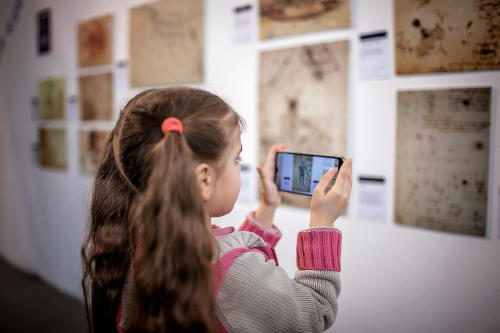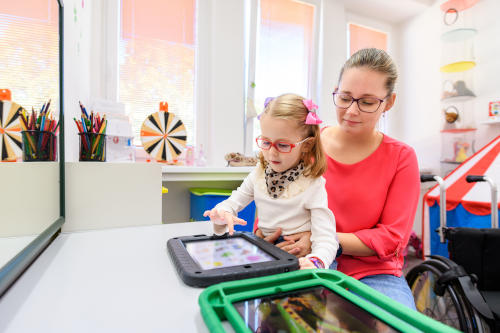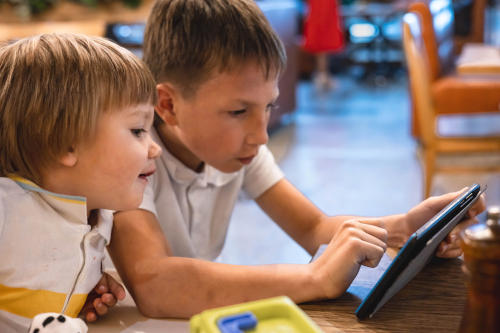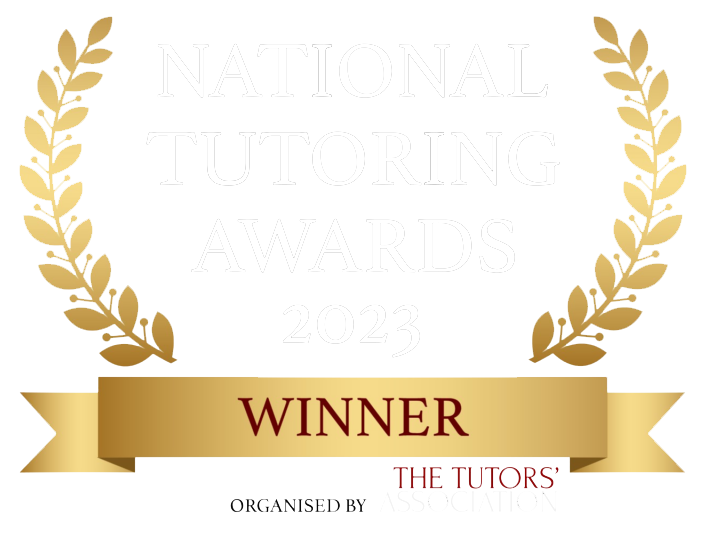Technology has completely revolutionised all aspects of modern life in just a few years. As an example, you can now see who’s at your front door when you’re hundreds of miles away or monitor your blood sugar levels if you’re diabetic, via a skin sensor that sends messages to your mobile phone.
When it comes to children with special needs, new technology can also be a great help in the classroom and at home, particularly when it comes to communication.
Augmented and Alternative Communication

Anything that helps a person to communicate (on top of or instead of the spoken word) is referred to as ‘augmented and alternative communication’ or ‘AAC’ by speech and language therapists. Although it’s a fancy term, it can mean something as simple as facial expressions or gestures.
AAC can also include pictures, books or display charts but in addition, there is an ever-increasing number of electronic devices and software available to help children with SEN to express themselves. These often involve a tablet with symbols or a keyboard.
Visual Aids are Key

Rebecca Lynch is an education specialist at Widgit, a company that produces symbols for use in the classroom or anywhere else where communication needs to be clear and easily-understandable. People can download the software for use on a computer, phone or tablet, or print them off.
“Research has shown that the brain processes visual information 60,000 times faster than text,” she explains. “I worked in an autism-specific school for four years and sometimes struggled to support pre or non-verbal students. Using visuals made a massive difference to their wellbeing. Each member of staff had their own symbol so the children could see immediately who was looking after them or giving them their lunch, for example, so it reduced anxiety.”
Rebecca says she has also seen symbols used for the words of a song, allowing children to join in with group singing.
Technology Can be a Lifeline for Non-Verbal Children

Leo, now aged 11, developed autistic symptoms and behaviours overnight as a very young child after a mysterious infection. Although a rare occurrence, this is thought to be due to an immune response that causes brain inflammation and is referred to as ‘PANS’ (paediatric acute-onset neuropsychiatric syndrome) or ‘PANDAS’ (paediatric autoimmune neuropsychiatric disorders associated with streptococcal infections).
Mum Steph says that he went from being a chatty, happy toddler to non-verbal and although the situation persists today, their family life has been massively improved by AAC technology which helps Leo to communicate.
“He uses an app called ‘Grid for iPad’,” she explains. “It allows people to use symbols to make sentences or ask for something. Alternatively, they can use a keyboard to type their thoughts. Leo prefers to use the keyboard which activates an electronic voice but people can switch that off if they prefer.”
Better Communication Greatly Reduces Stress in the Family

The family has discovered that despite Leo’s difficulties, he has a lively and enquiring mind. “It’s been life-changing,” Steph reveals. “Before, it was guesswork, working out what he wanted or was trying to say. We’ve discovered that he can spell, for example, and he’s got opinions on everything from politics to sport to music – you name it. And there’s a lot of humour in what he says, he’s always cracking jokes!”
The app also allows him to interact with the wider world – he e-mails friends and when the family goes to a restaurant or café, he uses it to tell staff about his food allergies. The only slight downside is that Leo likes to hold hands with someone he knows well and trusts while he uses it, simply for comfort. This means he doesn’t always use it at school.
Try Before You Buy

Although the benefits are obvious, Steph has found that it can be difficult to persuade local authorities or health professionals that innovative technology can be helpful. “People can have set ideas on what’s appropriate for a child. When we went to a private speech and language therapist, we found that they were more open to trying new things.”
She recommends that parents should do a lot of research before committing to purchasing a particular device or app as there are a lot on the market and they can be expensive. Another, similar app she came across was ‘Proloquo2Go’. It’s a good idea to start with companies that offer a free trial before buying, she suggests.




